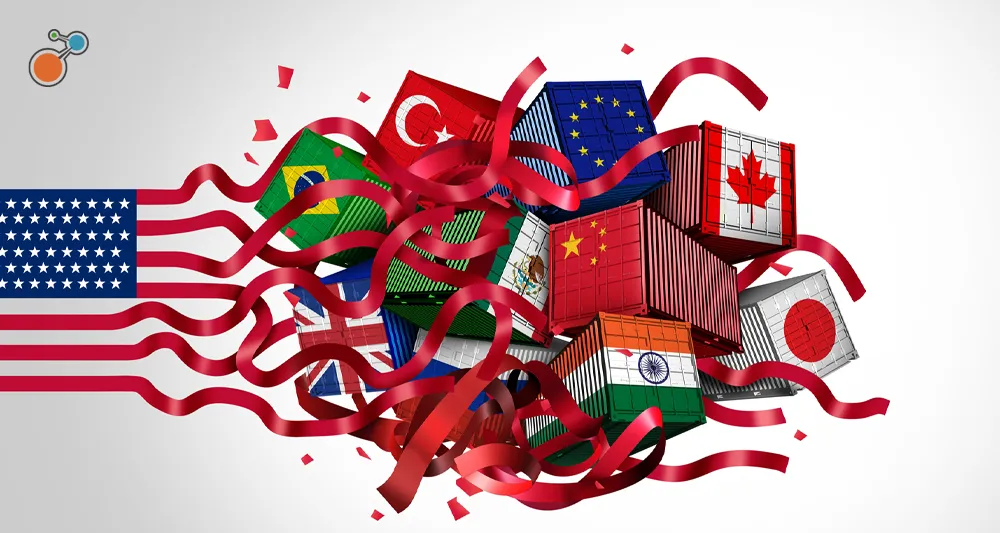By Andrea Brody, Chief Marketing Officer, Riskonnect, Inc.
Talk of tariffs and the potential impact is hard to escape these days. The rapid-fire pace of on-again-off-again change has set off historic turmoil of financial markets and upended business plans. What can a risk manager do to cut through the noise and make some sense of the matter?
The truth is you can't control the markets. You can't control the tariffs. But you can control how much risk you take. Here are a few steps to help you assess risk under a cloud of uncertainty.
1. Stay informed. As demonstrated by recent events, tariffs can change quickly based on geopolitical developments, trade negotiations, or regulatory shifts. Risk managers can track these changes in real time with the help of:
- Government websites. There are several government websites and tools that track the latest rules of origin and trade agreements, such as the FTA's tariff tool.
- Independent business organization research. Think tanks like the Conference Board and other independent groups like the U.S. Chamber of Commerce offer tools and updates to help businesses navigate tariffs and understand the impact to business.
- Industry association notifications. The National Manufacturers Association, the National Retail Federation, the Consumer Brands Association, and many other industry trade groups analyze the latest developments through the lens of their constituents and issue regular updates.
- AI-driven monitoring tools. AI can continually scan for updates on tariff policies and summarize the changes for you.
Food for thought: Scenario planning can model how different tariff scenarios could impact operations, so you'll be well-prepared to make fast, confident decisions when changes occur.
2. Reevaluate and diversify your supply chain. Tariffs expose weaknesses in overly centralized/foreign-dependent supply chains. One hiccup in the value chain can have knock-on effects that ripple through the entire business. Now's the time to:
- Identify suppliers and regions most vulnerable to tariff increases. Understand where your critical components originate and how a tariff increase could impact your cost structure.
- Explore nearshoring or reshoring options. Are alternative suppliers available domestically?
- Develop a more diverse supplier network to reduce concentration risk. Aggressively streamlining your suppliers can expose the organization to dangerous single points of failure.
Food for thought: Diversifying your supplier mix isn't just about controlling tariff damage. It's a chance to build a more resilient supply chain for the future.
3. Rethink cost structures and financial impact. When tariffs hit, costs rise. Work closely with your finance and procurement teams to:
- Model the financial impact of new or proposed tariffs. AI can quickly run through multiple scenarios to analyze the impact of increasing or decreasing tariffs on costs, compliance, and availability of materials. As with any AI-assisted analysis, however, be sure to verify the facts with human oversight before basing any big decisions on the results.
- Adjust contracts with suppliers to include tariff contingencies. Coming up with an agreement in advance can help blunt the impact should an unexpectedly high tariff go into effect.
- Explore strategic pricing changes that pass some of the burden to customers without compromising competitiveness. AI can help adapt pricing strategies to any form of economic volatility.
Food for thought: Transparent financial modeling and proactive pricing strategies are key to preserving margins.
4. Strategize inventory and logistics. Tariff changes can influence more than just costs – they can also affect timing and logistics. Consider whether it makes sense to:
- Front-load inventory before tariffs take effect. Can you economically stockpile inventory to protect you from at least short-term volatility?
- Reroute shipments to avoid high-cost jurisdictions. Is it worth sacrificing faster shipping time to route through locations with lower tariffs?
- Use tariff engineering. Can you make small design changes to shift product classifications and reduce duties?
Food for thought: Managing these levers smartly can improve flexibility and cost-efficiency.
5. Stay compliant and reduce legal risk. Tariffs don't just create financial exposure – they open the door to regulatory and legal risk. This is the time to:
- Review customs compliance practices.
- Work with legal teams to update contracts with tariff clauses or force majeure provisions.
- Train internal teams on evolving documentation and import/export rules.
Food for thought: Being proactive can help avoid fines, shipment delays, and reputational damage.
6. Communicate early and often for transparency. The most underestimated part of tariff risk management is communication. Keep your internal and external stakeholders informed with:
- Regular briefings for executives and board members
- Cross-functional updates to align operations, finance, and legal
- Clear messaging to customers about changes to product pricing or availability
Food for thought: Strong communication builds trust. And trust is a competitive advantage when others are scrambling.
Turning Tariff Pressure into Strategic Opportunity
Tariffs are disruptive to say the least, but they also present a unique chance to stress-test and strengthen your organization's operations.
Today's risk management software can track tariff changes and apply duties across your vendors and products. It can run what-if scenarios to help you understand how new and revised tariffs affect costs, margins, and supply-chain dependencies. And dashboards can be constructed to instantly show your real-time exposure by region, supplier, or product line.
By taking a holistic, proactive approach to tariff-related risk – supported with the right software – you can quickly quantify risk, and leaders can make better decisions, faster. That will help your company not just weather the storm but emerge stronger and more agile.
For more on holistically addressing uncertainty, download our ebook, Governance, Risk, and Compliance: The Definitive Guide, and check out Riskonnect's GRC software.




